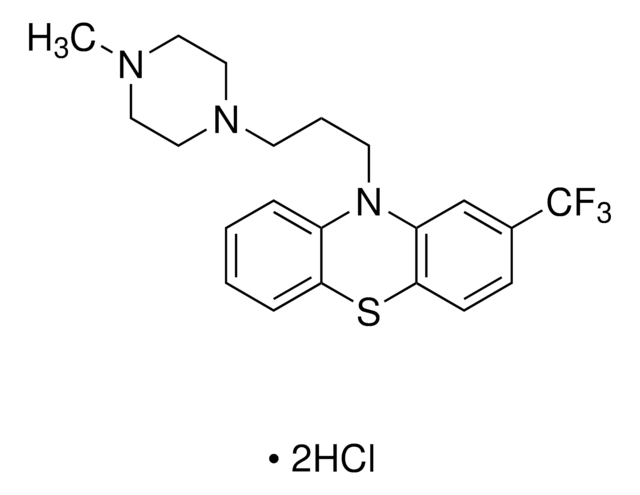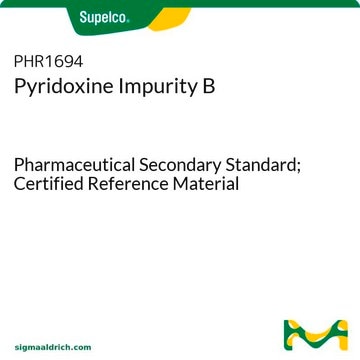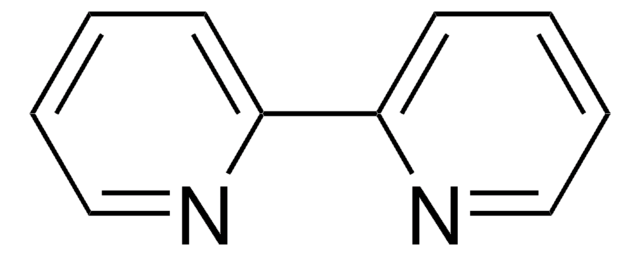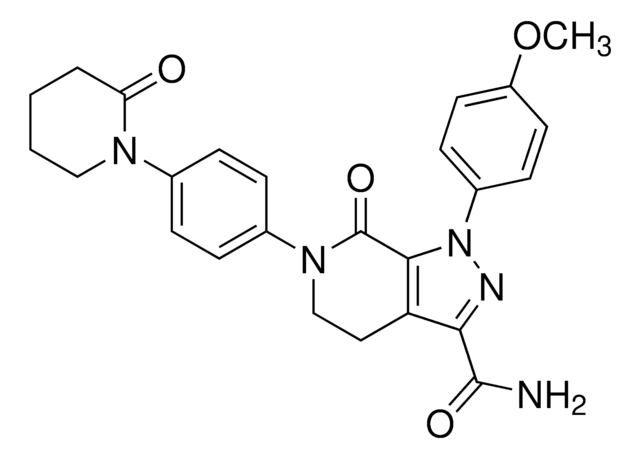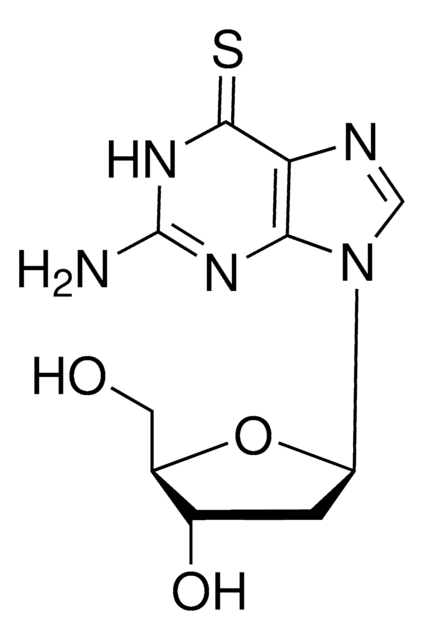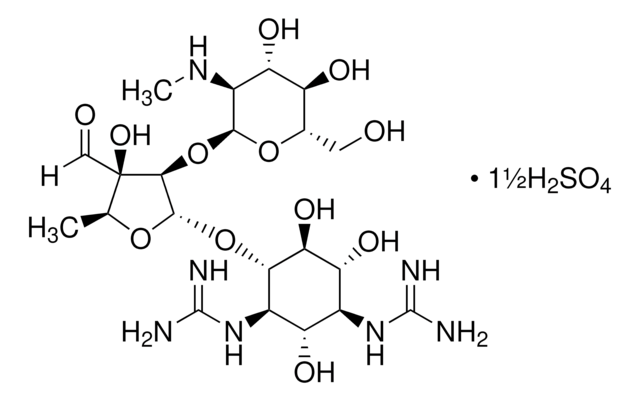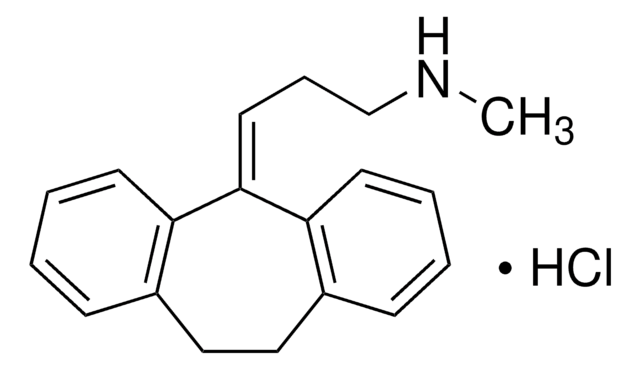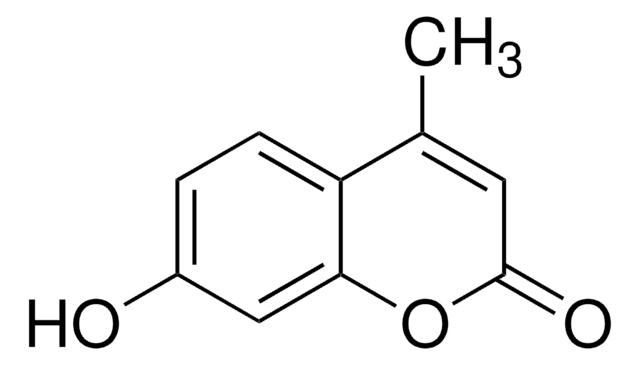T6062
Trifluoperazine hydrochloride
meets USP testing specifications
Synonym(s):
Trifluoperazine dihydrochloride, 10-[3-(4-Methylpiperazin-1-yl)propyl]-2-(trifluoromethyl)-10H-phenothiazine dihydrochloride
About This Item
Recommended Products
agency
USP/NF
meets USP testing specifications
Quality Level
assay
98-101% dry basis
form
powder
mp
243 °C (dec.) (lit.)
solubility
water: 50 g/L, clear
application(s)
pharmaceutical (small molecule)
storage temp.
−20°C
SMILES string
Cl[H].Cl[H].CN1CCN(CCCN2c3ccccc3Sc4ccc(cc24)C(F)(F)F)CC1
InChI
1S/C21H24F3N3S.2ClH/c1-25-11-13-26(14-12-25)9-4-10-27-17-5-2-3-6-19(17)28-20-8-7-16(15-18(20)27)21(22,23)24;;/h2-3,5-8,15H,4,9-14H2,1H3;2*1H
InChI key
BXDAOUXDMHXPDI-UHFFFAOYSA-N
Gene Information
human ... DRD2(1813) , DRD3(1814) , DRD4(1815) , HTR2A(3356) , HTR2C(3358)
Looking for similar products? Visit Product Comparison Guide
signalword
Danger
Hazard Classifications
Acute Tox. 4 Oral - Aquatic Acute 1 - Aquatic Chronic 1 - Eye Irrit. 2 - Muta. 2 - STOT RE 1 - STOT SE 3
target_organs
Central nervous system, Eyes
wgk_germany
WGK 3
flash_point_f
Not applicable
flash_point_c
Not applicable
ppe
dust mask type N95 (US), Eyeshields, Gloves
Choose from one of the most recent versions:
Certificates of Analysis (COA)
Sorry, we don't have COAs for this product available online at this time.
If you need assistance, please contact Customer Support.
Already Own This Product?
Find documentation for the products that you have recently purchased in the Document Library.
Customers Also Viewed
Our team of scientists has experience in all areas of research including Life Science, Material Science, Chemical Synthesis, Chromatography, Analytical and many others.
Contact Technical Service